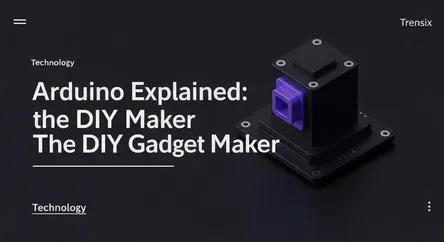Technology
Arduino Explained: The DIY Gadget Maker

Discover Arduino, the open-source electronics platform that makes creating interactive projects and prototypes accessible for everyone.
What is it?
Arduino is an open-source electronics platform based on easy-to-use hardware and software. It consists of a physical programmable circuit board, known as a microcontroller, and a piece of software, or IDE (Integrated Development Environment), that runs on your computer. Users write simple code in the IDE and upload it to the board, which can then interact with a wide variety of sensors, lights, motors, and other electronic components. Its simplicity and accessibility make it a cornerstone for anyone looking to create interactive objects or environments.
Why is it trending?
Arduino's popularity stems from its incredible versatility and a low barrier to entry. It has demystified electronics for hobbyists, artists, designers, and students who lack a formal engineering background. The platform is supported by a massive and active global community that contributes tutorials, project ideas, and pre-written code libraries, making complex projects achievable. Its affordability and cross-platform software have solidified its position as the go-to tool for prototyping new gadgets, from smart home devices and wearables to robotics and interactive art installations.
How does it affect people?
Arduino empowers individuals to become creators and inventors. It provides a hands-on way to learn programming and electronics, fostering critical STEM skills. For makers and entrepreneurs, it's an invaluable tool for rapidly developing and testing product prototypes at a low cost. By enabling people to build custom solutions to everyday problems, control their environment, or express artistic ideas through technology, Arduino fosters a culture of innovation, problem-solving, and digital literacy. It bridges the gap between a digital idea and a tangible, functioning device.